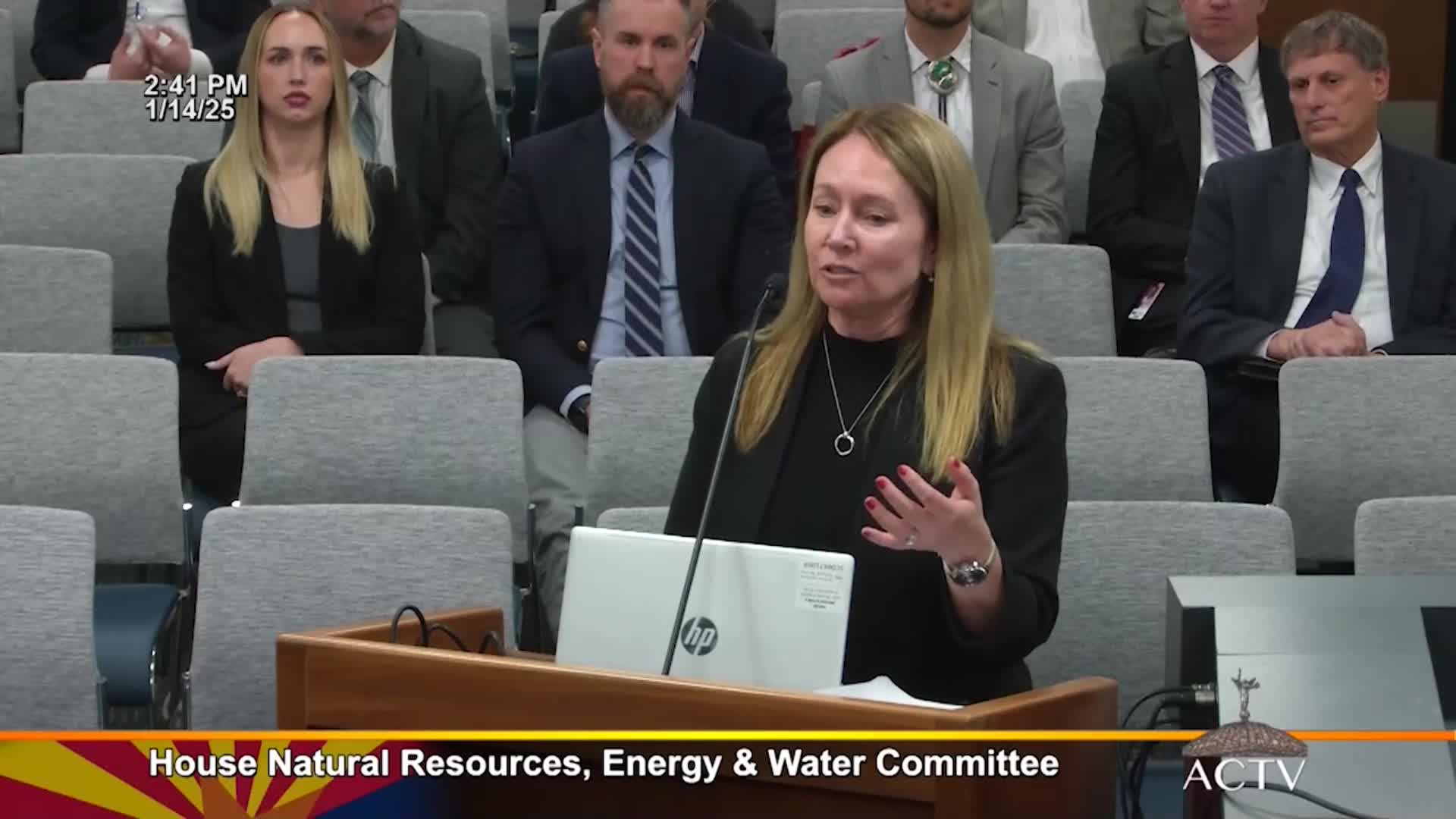Salt River Project unveils three key water resilience projects to combat supply challenges
January 14, 2025 | 2025 Legislature Arizona, Arizona
This article was created by AI summarizing key points discussed. AI makes mistakes, so for full details and context, please refer to the video of the full meeting. Please report any errors so we can fix them. Report an error »

The Arizona House Natural Resources, Energy & Water Committee convened on January 14, 2025, to discuss critical water management issues facing the state, particularly in light of ongoing challenges related to water supply and climate change. The meeting highlighted the importance of strategic planning and collaboration among various stakeholders to address the state's water needs.
A significant focus of the discussion was on the Central Arizona Project (CAP) and the Salt River Project (SRP), which are vital for water delivery in the region. Over the past decade, the state has managed an average of 320,000 acre-feet of water annually, with projections indicating that future obligations could rise to 60,000 acre-feet per year. This increase is attributed to potential new entities and cities joining the Greater Phoenix area’s water supply network.
Concerns were raised about the uncertainty of water supplies, particularly regarding the Colorado River, which has faced over-allocation issues. The committee acknowledged that while efforts have been made to secure long-term storage credits and collaborate with tribal entities, the reliability of water sources is diminishing.
The meeting also addressed innovative solutions to mitigate water loss, such as evaporation protections for canals. However, the feasibility of implementing such measures in Arizona remains uncertain due to high costs and logistical challenges. Studies conducted in collaboration with the Bureau of Reclamation revealed that while evaporation losses from the canal system are significant, the economic viability of covering canals with solar panels to reduce evaporation is questionable.
Kyle Tillman, director of water strategy at SRP, presented three key projects aimed at enhancing water resilience. The Verde Reservoir Sediment Mitigation Project seeks to recover lost storage capacity at Horseshoe Dam, which has seen a 40% reduction in capacity due to sedimentation since its construction. This project is in the feasibility study phase, with hopes of increasing surface water storage capabilities.
Additionally, the committee discussed the SRP-CAP Interconnection Facility, designed to facilitate the movement of water credits between the two systems. This project aims to enable entities with stored water credits to access their allocations more effectively, addressing a critical gap in the current infrastructure.
The meeting concluded with a commitment to continue exploring innovative solutions and partnerships to ensure Arizona's water supply remains sustainable in the face of growing demand and environmental challenges. The committee plans to follow up on these initiatives and monitor progress in the coming months.
A significant focus of the discussion was on the Central Arizona Project (CAP) and the Salt River Project (SRP), which are vital for water delivery in the region. Over the past decade, the state has managed an average of 320,000 acre-feet of water annually, with projections indicating that future obligations could rise to 60,000 acre-feet per year. This increase is attributed to potential new entities and cities joining the Greater Phoenix area’s water supply network.
Concerns were raised about the uncertainty of water supplies, particularly regarding the Colorado River, which has faced over-allocation issues. The committee acknowledged that while efforts have been made to secure long-term storage credits and collaborate with tribal entities, the reliability of water sources is diminishing.
The meeting also addressed innovative solutions to mitigate water loss, such as evaporation protections for canals. However, the feasibility of implementing such measures in Arizona remains uncertain due to high costs and logistical challenges. Studies conducted in collaboration with the Bureau of Reclamation revealed that while evaporation losses from the canal system are significant, the economic viability of covering canals with solar panels to reduce evaporation is questionable.
Kyle Tillman, director of water strategy at SRP, presented three key projects aimed at enhancing water resilience. The Verde Reservoir Sediment Mitigation Project seeks to recover lost storage capacity at Horseshoe Dam, which has seen a 40% reduction in capacity due to sedimentation since its construction. This project is in the feasibility study phase, with hopes of increasing surface water storage capabilities.
Additionally, the committee discussed the SRP-CAP Interconnection Facility, designed to facilitate the movement of water credits between the two systems. This project aims to enable entities with stored water credits to access their allocations more effectively, addressing a critical gap in the current infrastructure.
The meeting concluded with a commitment to continue exploring innovative solutions and partnerships to ensure Arizona's water supply remains sustainable in the face of growing demand and environmental challenges. The committee plans to follow up on these initiatives and monitor progress in the coming months.
View full meeting
This article is based on a recent meeting—watch the full video and explore the complete transcript for deeper insights into the discussion.
View full meeting
